The very first FZ´s guitar was an archtop acoustic one; bought in audition by his brother Bobby ($1.50); the young Frank had interest in R&B, and, since he tought that the guitar solos were very short, he decided to play his own long ones.
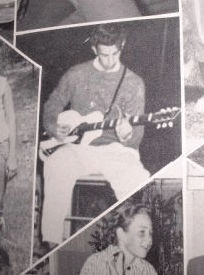
In the first 60´s, Zappa (who was part of the "Teenager combo" called The Black-Outs; yes, the high school years) decided to rent a white Fender Telecaster, and played it for a short time. This is a very classic-sounding instrument, and maybe not very convenient for Zappa future plains... but, as I write some paragraphs later, this is not the last time we can see a Tele in FZ´s hands.
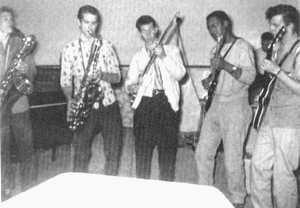
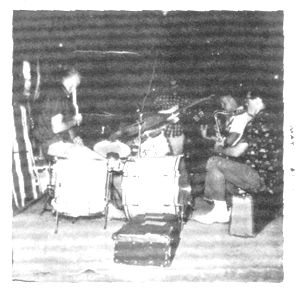
A year later, FZ bought a Fender Jazzmaster, a solid body guitar with a very peculiar and classic sound.
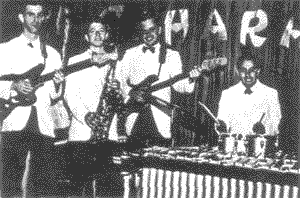
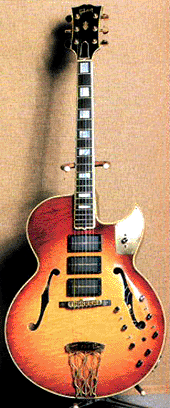
Some Years later, Zappa bought a Gibson ES-5 Switchmaster. This guitar is an old jazz model, and can be listened in the two first Mothers´ albums. This instrument were very oriented to jazz playing, and Zappa replaced it for another guitars from Gibson: being the most important ones a Les Paul Goldtop and another modified guitar -with a LP body too- wich I haven´t more information about (Yet!). FZ played these guitars for several years, and his sound were very bluesy-standard.
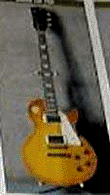
As a matter of fact, mankind meets Frank Zappa The Guitarist when the album Hot Rats is released (1969). In this album, Zappa assumes the main role, in a project very different from Lumpy Gravy. "Willie The Pimp" will be always remembered (or maybe not, but I hope yes...) for its famous killer riff, the precise and incisive playing, and its author´s capability for creating ideas in a nine minutes solo without repeat none of them (and we know that he could have been making the same for HOURS!).
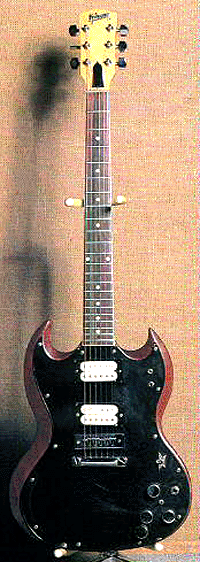
A short time later, Zappa would be seducted by the light and comfortable body of the Gibson SG. During the first 70´s, Z plays basically the black SG that appears on the Roxy & Elsewhere album´s cover, although he owned more guitars like that, including one of that old SGs with a mirror pickguard (...). Well, the black SG was literally destroyed, and Frank bought a handmade copy to replace it. This instrument hasn´t the bigsby vibrato system (very hard to keep in tune), and counts with an extra fret. You can hear this guitar in the Zappa in New York album or in Sheik Yerbouty.
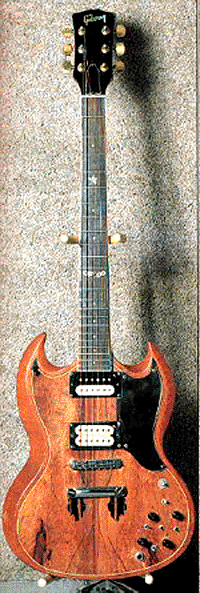
During these years, although he still played mainly guitars from the guys at Gibson (who NEVER contacted him to talk about a signature model... I will revenge one of these days...), Zappa owned some Fender instrument (there is some picture playing a Telecaster in 1970). Also in this period, Zappa made some modifications to a red Fender Stratocaster burned by Jimi Hendrix: Zappa put new pickups and a Performmance neck with the Gibson SG measures. This guitar was very feedbacky, so Zappa didn´t play it very often; but he used it several times in the studio. You can hear this guitar in the "Drowning Witch" and "Zoot Allures" solos. This guitar was recently sold in audition; no comments...

During the first 80s, Zappa´s main guitar was a red Gibson Les Paul Custom with DiMarzio pickups; but he played also a Stratocaster with (surprise) DiMarzio pickups, a Floyd Rose and a little electronic system specially designed to evaluate the quantity of feedback that a concrete hall could generate, and, with a little preamp/eq adjustement, control this parameter.
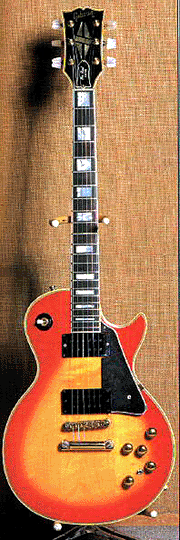
Until that period, Zappa used to install Fender and Gibson pickups in his guitars; but, from the first 80s, he tended to search more specific tones, and he started replacing the original pickups by DiMarzio ones. He also liked some models by Seymour Duncan, and installed these pickups in some guitars (remember de noisy "mini" Strat and Les Paul). In the ´84 and ´88 tours, FZ played a yellow Strat with the same specifications than the customized guitars from the years before.
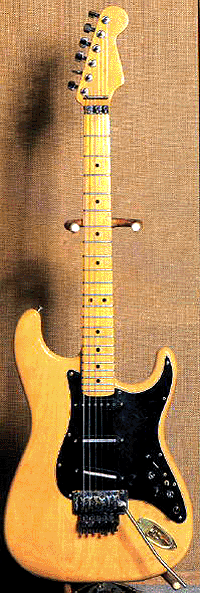
Zappa owned also (of course) some auxiliar instruments wich played in specific situations. For example: a Martin guitar, a Fender XII (although he said in interviews that he HATED 12 strings guitars), a black widow and a customized fretless model ("San Ber´Dino", "Po-Jama People").
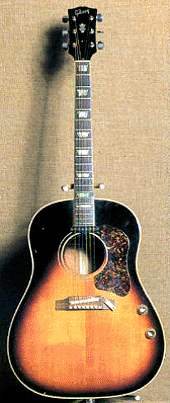
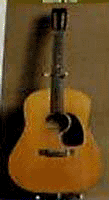
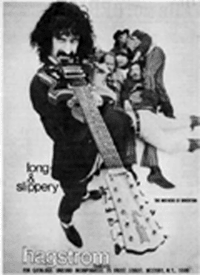
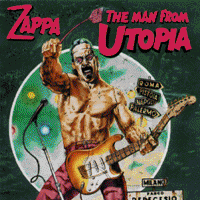
In the beginning, Zappa´s tone was standard; in the Freak Out! recording sessions, he played with his Switchmaster plugged to a Fender Deluxe. A few years later (obviously, this "normal sounding" situation could not be very long), he started exploring new posibilities at "this side" of the guitar. Zappa, as a guitarist, worked in two mediums radically different for him: the live playing and the studio playing. Most of his discography´s solos comes from live recordings. Zappa said that was very hard for him to find the Muses at the studio; as a soloist, he prefered to record the solos he played on stage, and edit the stuff wich had some musical interest.
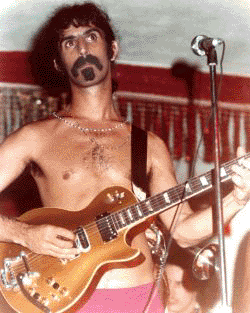
He used to play with three ampls simultaneously. The signal was sent to one in particular, or to the three amps at the same time, in order to get a concrete tone. Zappa usually worked with Marshall, Acoustic, Carvin and Orange Amplifiers; and very often with Sennheiser 421 mikes. The amps´ outputs were doubled to a bass channel. Using mono and stereo combinations with the different amps, Zappa was able to enfatize very diverse aspects of the sound that came from the pickups; he could get very soft tones (even sweetly clear, as can be heard in the ´88 tour albums) and barbarian overdriven ones -very often a Marshall machine is involved in this last case-.
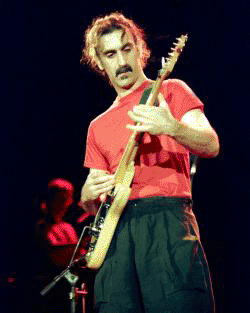
Zappa used to play with Marshalls at the studio too, but not always; in fact, he get some wonderful tunes using an "inofensive" Pignose (Over-Nite Sensation). The edit work was done also with the guitar tracks; because of this, Zappa needed a good tone to play, but was not so important the fact of getting an incredible, and wonderful, and bitchen sound. He could edit the tracks a million times at the studio and play with the basic stuff until getting the desired results -and he used to-.
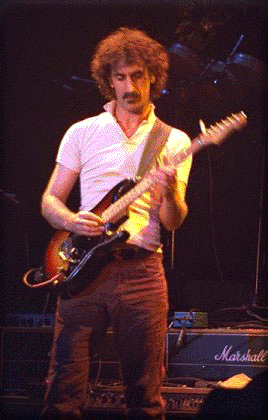
All this text is only some kind of orientation, because, obviously, Zappa made what he wanted to make, and that´s all. Too many records and too many solos to write an encyclopaedia about the "sounding and timbrical procedures". One of these days, if I go insane, I will do it; but I don´t think so...
Is a fact that Frank Zappa was not one of that guitarists that play only to have "fun" with a multi-effect unit (fortunately...). His sound had its phase one at the amplifiers´ control panel and, of course, the mix console and the "record machines" had a lot to say at the studio. In spite of that, he used some effects when he was playing live; he used digital delays and, sometimes, a Mutron Bi-Phase and and Octave Divider. In some occasions, he used an Electro-Harmonix Big Muff too. But, without any doubt, the most amazing Zappaesuqe effect was the Electro Wagnerian Emancipator -an exclusive effect designed by Bob Easton-: Zappa was interested in that thing because it generated lots of harmonics (wich Zappa could use or avoid), and the tone became very fluid and gorgeous, but was maybe too similar to an Farfisa organ... or a goose. I think that it was a very funny sound.
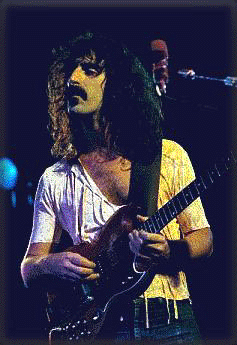
There was, of course, space to the electronic things on the instrument itself. From the frist 80s, Zappa made install an electronic preamp/eq system on most of his guitars. Using the parametric filters of this thing, he could modify some signal´s frequences, having a little game with the original gain level (this had consequences also in the feedback), and was able to create some kind of artificial "enviromental situations".
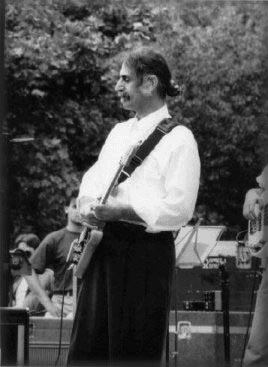
There are also some appearances by another effects in some recordings, like the Oberheim filter that can be listened in "Ship Ahoy". But the most zappaesque effect is the wah-wah pedal (Vox or Cry-Baby). Zappa bought his frist wah-wah before meeting Jimi Hendrix, and used it in very personal ways (for example, with an alto sax). I think that his wah phrasing is more interesting than the stuff played by Hendrix or Clapton, who applied it on a more mechanical way, jumping over the rythm. Zappa tended to use it as some kind of equalization pedal, searching new tones and articulating the melodies in a very fluid and exciting way. Listen to "Willie the Pimp" and "Inca Roads"!.
Now, the strings. Zappa, who played with a really LOW action, used to work with Ernie Ball (.008 or.009) and, later, with Maxima gold strings. In the first years, FZ played with Gibson picks, later with Fender Medium; in the eighties, he used metal picks.
O.K., that´s all in this section, thanks for reading.